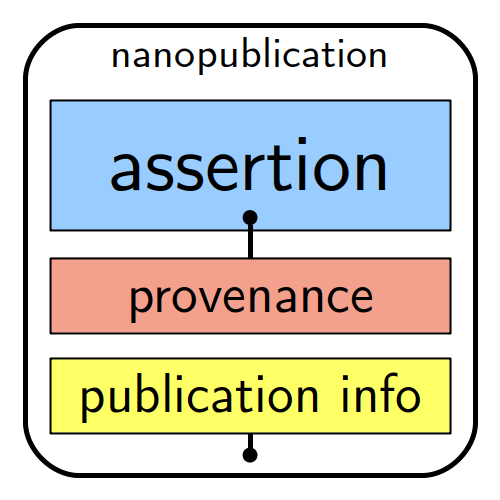What are nanopublications?
Nanopublications are a formalized and machine-readable way of communicating the smallest possible units of publishable information. This could be, for example, the outcome of a scientific study or a claim made by a particular scientist.
Nanopublications are searchable, citable, and contain authorship and attribution information. The aim is to encourage individual scientific results to be released in a traceable and interoperable format. As such, nanopublications are an effective FAIR means of communicating scientific claims and results. Read more about them at http://nanopub.org/.
Different elements of a nanopublication
From nanopub.org documentation (2020/12/02)
 Schematic representation of a nanopub
Schematic representation of a nanopub
As can be seen in this image, a nanopublication has three basic elements:
Assertion: The assertion is the main content of a nanopublication in the form of an small atomic unit of information
Provenance: This part describes how the assertion above came to be. This can include the scientific methods that were used to generate the assertion, for example a reference to the kind of study that was performed and its parameters.
Publication Info: This part contains metadata about the nanopublication as a whole, such as when and by whom it was created and the license terms for its reuse.